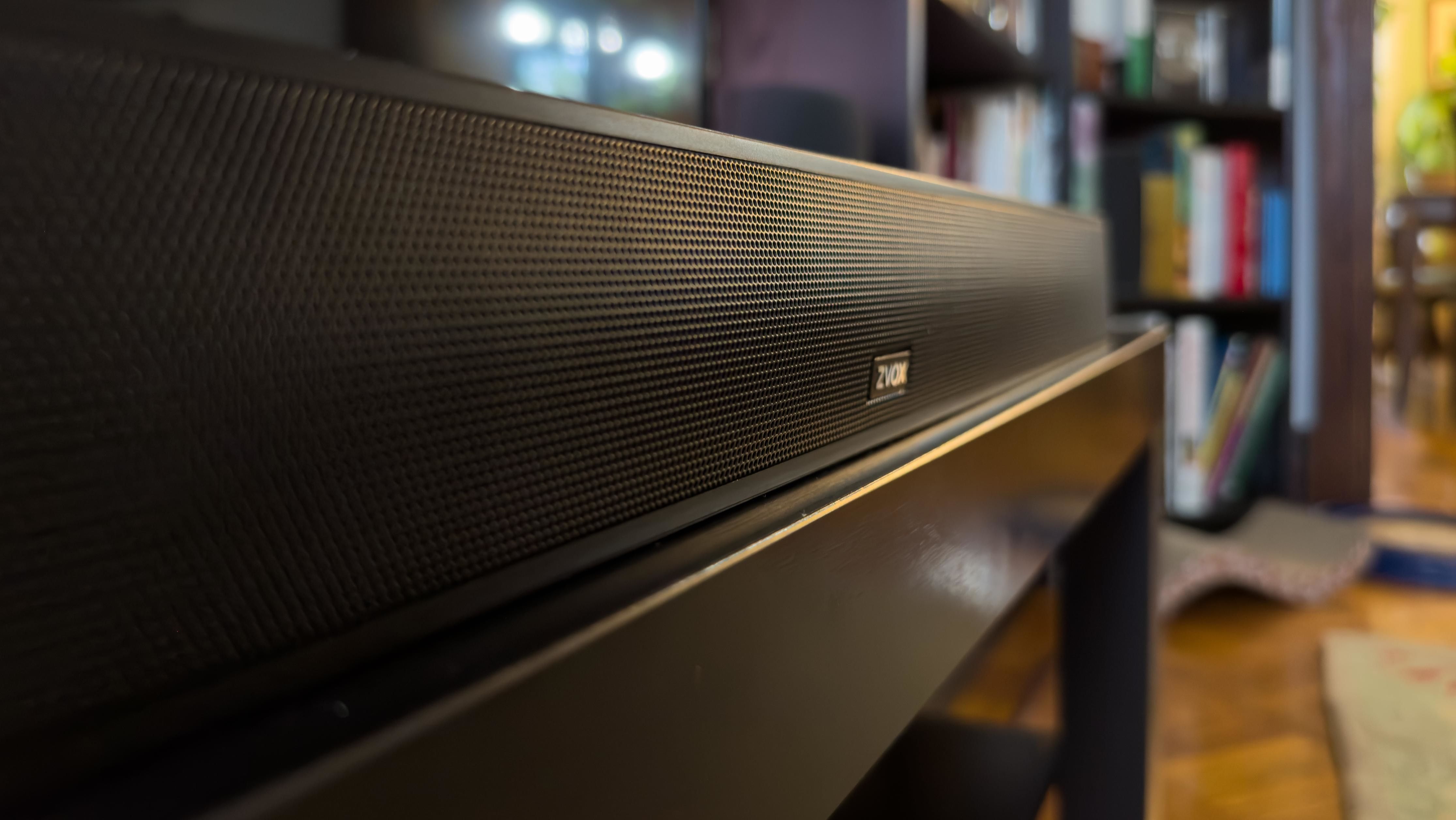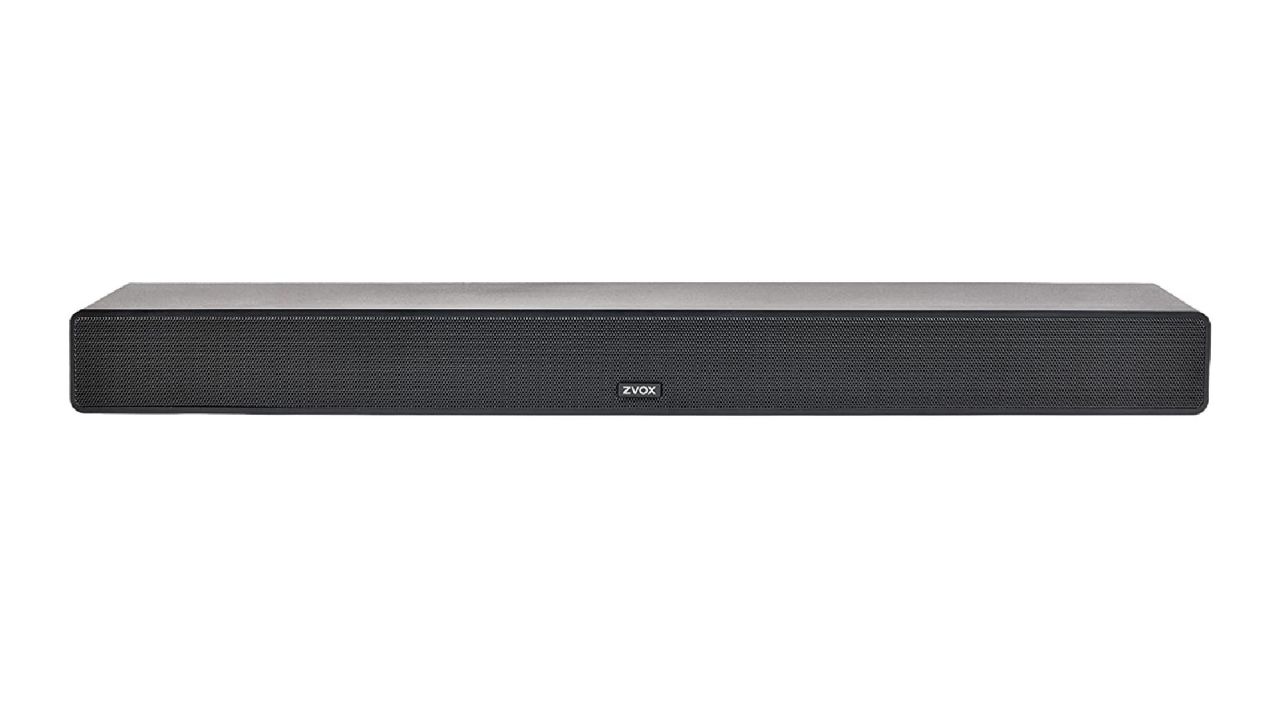It’s hardly a secret that movies have gotten harder to understand, mainly due to a combination of directors’ choices, actors’ delivery and a ramp up in digital technology. There’s not much you can do about mumbled and muddy dialogue when you go to the cinema. Still, at home, many of us — myself included — have defaulted to turning on subtitles just to understand what people say in modern films and shows. Which is why I decided to explore the Zvox AccuVoice AV355, a soundbar that helps you hear dialogue even better.
Using hearing aid technology called AccuVoice, the AV355 soundbar claims to lift voices out of the background sounds to make the voices crisper and clearer. With my mild hearing loss, I’m finding it harder than ever to enjoy my favorite big-budget action films while still getting the nuances of the actors’ lines, so I decided to give the speaker a go.
If you're struggling to hear dialogue in your favorite movies and shows (and especially if you're hard of hearing), the Zvox AV355 is a great option for you. Just note that you'll sacrifice overall sound quality and modern conveniences for vocal clarity.
What we liked about it
Easy setup

Setup was relatively straightforward. You plug in the soundbar, connect it to your TV, turn down the TV volume and adjust the AV355’s volume using the remote control. That’s it.
The soundbar should be placed centrally in front of the TV. It’s not large, so it should fit on most TV stands without too much crowding. The speaker does come with wall-mounting points on the back if you’d like to attach it below a wall-mounted screen.
There are several ways to connect this to your TV. It should be said right now that this is not a high-end surround sound soundbar. It does not support HDMI, eARC or any of the alphabet soup of the modern home entertainment system. The ports include a 3.5mm analog minijack, red-and-white RCA analog ports and a digital optical signal port. That’s it. If your TV doesn’t support any of these outputs — though it is improbable it will be bereft of all these options — you can run a cable from your cable or set-top box. The soundbar also allows for plugging in wired headphones or an amplified subwoofer.
The relative absence of connection options was refreshing in a retro manner. This is a device aimed at the hard of hearing, so there’s little reason to bother with high-end digital surround sound or connecting it to your network to stream Spotify.
Clear voices
The AV355 offers three levels of surround sound, ranging from ultra-clear vocals to a more balanced sound that strives to stick with the original tone. This is for people who don’t suffer much hearing loss at all. I found level three to be the most balanced regarding background volume and vocal clarity for movies, while the midrange was good for general TV, like sitcoms or CNN. The vocals were lifted, but they didn’t overwhelm the larger soundscape.
Then there’s the AccuVoice setting, which offers six levels of increasing vocal enhancement. I put it to the ultimate test with “The Dark Knight Rises.” Director Christopher Nolan is notorious for muddy dialogue that gets lost in multilayered soundscapes. Tom Hardy is the mumbliest of actors, and he plays his whole part while wearing a voice-distorting mask. Christian Bale likes to growl out every line. Oh, and add in Michael “Marblelemouth” Caine, and it’s a wonder anyone knew what was being said.
How’d the AV355 do? Pretty well! I found that vocal clarity increased as I went up the scale, and I needed to rely less on the subtitles. I found the sweet spot was level three, which really let the vocal pop out. It was a dramatic difference from listening to a movie through the TV speakers or even my stereo HomePod setup.
Finally, for those who are truly hard of hearing, there’s a SuperVoice setting for extreme voice clarity. It uses advanced compression algorithms to lift voices out of live TV, sporting events, movies and the like and cuts down almost all other sounds to a startling degree. For folks with mild to moderate hearing loss, this will be overkill and sounds tinny and unpleasant. I stuck my fingers in my ears to simulate severe hearing loss and found I could still make out the dialogue just fine and even got a feel for the background sound.
What we didn’t like about it
It can be awkward to operate

Operating the AV355, however, was a bit fiddly. It’s entirely controlled by the remote control, and an LED panel on the front is the only means of knowing what the speaker is doing. The remote’s volume, mute and power buttons are straightforward, but the input button cycles between cryptic messages like “ln1d,” “ln2a” and “both.” The first one is for the digital optical input, the second for analog minijack and “both” is, well, for both.
Given that it’s likely to be used by older folks who might not be the most technologically adept, this arcane set of numbers and letters as the only information you get back from the speaker could be a problem. My mother, for example, would be unable to figure out the settings and probably have some frustrations.
It is possible to use this with an Amazon Echo, Echo Dot or Echo Input device. But you first have to connect the Echo to the input port on the speaker using the 3.5mm minijack cord and set the input selector to “both.” You can now ask Alexa questions, which will automatically lower the TV’s response volume. The volume will return to normal levels once you’re done telling Amazon all your secrets.
Some sound quality issues
I’ll cut to the chase: If you’re looking for rich surround sound, this is not the TV speaker for you. But that’s not really the point, is it? The point is to boost dialogue and cut back on all the ear-bleeding, skull-pounding audio soundscapes directors have been subjecting us to over the last decade. In that case, it works very well.
Like the AccuVoice setting, the SuperVoice setting has six levels of increasing vocal clarity, although I found that the benefits hit a point of diminishing returns about halfway up the scale. After that, it sounded like I was listening to a movie over an old telephone line. I found that as I went up in boosting, consonants — especially sibilants like “S” and “C” — began to hiss and become unpleasant to hear. Whispered dialogue — like Bale’s in his dramatic scenes — was especially grating, like fingernails on a chalkboard.
How it compares
| Dimensions | 24 x 2.2 x 3.25 inches |
32.2 x 3.9 x 2.8 inches |
|---|---|---|
| Weight | 4 pounds |
5.5 pounds |
| Inputs | Toslink optical digital and 3.5mm analog |
Digital optical, HDMI 2.0a (ARC), USB |
| Connectivity | Alexa Ready feature offers simple integration |
AirPlay, Apple HomeKit, Alexa, Google Home, Bluetooth, built-in Roku player |
| Sound | 6 levels of AccuVoice dialogue boost and 6 levels of SuperVoice Boost, which diminishes background sounds |
PCM and Dolby Audio compatible, Virtual Surround Sound, expandable via Roku Wireless Bass, Bass Pro or Roku Wireless Speakers |
| Price | $200 | $180 |
Bottom line
Does the AV355 help with mumbled, breathy dialogue? Absolutely. Dialing up the vocal clarity can help those with hearing loss enjoy their favorite shows and movies again without turning on subtitles. The downside is losing all the atmospheric sound that creates so much emotional energy in modern movies. But if it’s a choice between following the story and feeling the bass rattle your sternum, many people will pick the former, and that’s perfectly OK.
If you just want a solid overall soundbar that has better sound and more modern features, you can go with our overall best soundbar pick in the Roku Streambar Pro or splurge for our upgrade pick in the Sonos Arc. But if you’re struggling with basic movie and TV dialogue (and you’re tired of subtitles), this affordable, serviceable soundbar can improve the quality of life for people who need to hear it.


















